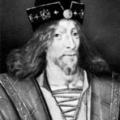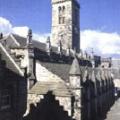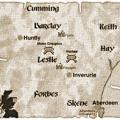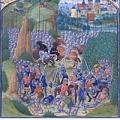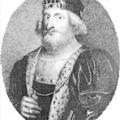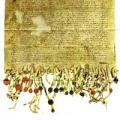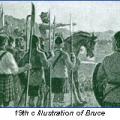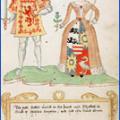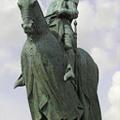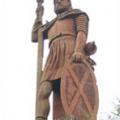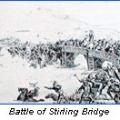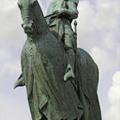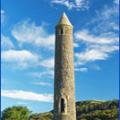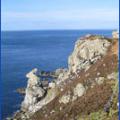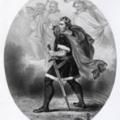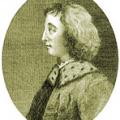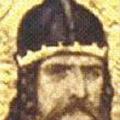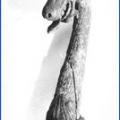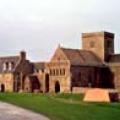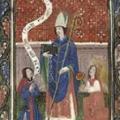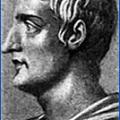Categories
Most Liked
Posted on July 17, 2013
by Amanda Moffet
by Amanda Moffet
Posted on May 12, 2013
by Chas Mac Donald
by Chas Mac Donald
Posted on August 29, 2013
by Amanda Moffet
by Amanda Moffet
Posted on February 6, 2013 by Donald | 1 views | comments
In 1424, when James I returned from eighteen years imprisonment in England, he set about dealing with those who declined to aid his release from prison earlier and curbing the power of Scotland’s nobles.
His continual law-making added to the number of enemies he acquired for himself.
The Earl of At...
Posted on February 6, 2013 by Donald | 0 views | comments
St Andrews University is first mentioned in documents of 1410, but its birth is usually assigned to the charter given to Bishop Henry Wardlaw in 1412, endorsed the following year by Pope Benedict XIII.
This was Scotland’s first university and had Warlaw as its Chancellor, while Laurence of Lindores ...
Posted on February 6, 2013 by Donald | 2 views | comments
This battle, regarded by many today as the conflict between Highlanders and Lowlanders which killed the expansion of Gaelic influence, was one of the most brutal in Scottish history, becoming known as ‘Red Harlaw’.
While James I was growing up in English jails, Donald, Lord of the Isles made it his...
Posted on February 6, 2013 by Donald | 6 views | 1 comments
The Battle of Otterburn is remembered as the fight where ‘a dead man won the field’.
A Scottish attack was made in Northumberland on Henry Percy and his estates, led by James Douglas, 2nd Earl of Douglas, on the 5 August 1388. During the fighting, Douglas was very badly wounded.
He told his office...
Posted on February 6, 2013 by Donald | 0 views | comments
In 1332 during an Anglo-Scots peace, Edward Balliol sailed with eighty-eight ships from the Humber to Fife and fought his way to Scone. His father John had abdicated in 1296 and Edward, claiming his family as still the true royal line, had himself crowned King of Scotland.
David II’s claim had the ...
Posted on February 6, 2013 by Donald | 3 views | comments
Before Pope John XXII, Scotland had been recognised as an independent nation by the papacy. Pope John preferred Edward II’s version of who was ruler of Scotland however, and in 1319 he accused four Scottish bishops of rebellion and summoned them to answer to him.
Robert I had been King of Scotland ...
Posted on February 6, 2013 by Donald | 6 views | comments
During the Wars of Independence, Philip de Mowbray agreed to surrender Stirling Castle if not assisted by England. Edward II therefore came across the border and by the time he left Edinburgh for Falkirk on the 22 June, he had amassed an army of sixteen thousand infantry and two and a half thousand ...
Posted on February 6, 2013 by Donald | 12 views | comments
After murdering John Comyn, the way was clear for Robert the Bruce to become King of Scotland without challenge.
His grandfather had first contested the Bruce family’s claim to the throne back in 1286. It was the hereditary office of the Earl of Fife to enthrone a Scottish king as they sat upon the...
Posted on February 6, 2013 by Donald | 5 views | comments
In 1304, John Comyn II, known as the Red Comyn after his grandfather, moved his allegiance over to England’s Edward I and sat on his ‘Scottish Council’.
When Robert the Bruce set his plans to resume the War of Independence in 1306, he and Comyn met together in southerly Dumfries at the isolated Fran...
Posted on February 6, 2013 by Donald | 0 views | comments
Continuing from his success against the English at the Battle of Stirling Bridge in 1297, William Wallace had continued his ‘liberation of Scotland’ with the recapture of Berwick and raids across Northumberland. In the name of the absent John Balliol he was made a Guardian of the Realm in the March ...
Posted on February 6, 2013 by Donald | 3 views | comments
Scotland was entirely submissive to England by 1296. Following English victories at Dunbar and Berwick, John Balliol had surrendered himself and was taken as a prisoner to England.
Edward I toured his new possession as far north as Elgin and removed the Stone of Destiny from Scone to take it back to...
Posted on February 6, 2013 by Donald | 1 views | comments
With Edward I on the throne of England, John Balliol of Scotland and Philip IV of France drew up an offensive and defensive alliance which became a treaty in 1295. This was to have been endorsed with marriage between Balliol’s son Edward and Philip’s niece. The unnecessary disaster of Flodden in 151...
Posted on February 6, 2013 by Donald | 1 views | comments
Kintyre and the Western Isles had been acknowledged as the property of the Norwegian crown in a treaty between Edgar, King of Scots and Magnus Barefoot, King of Norway, in 1098.
By the mid-12th century the Norwegians appeared uninterested in their Scottish lands, and by 1156 Somerled, descended from...
Posted on February 6, 2013 by Donald | 2 views | comments
Magnus Barefoot (or Barelegs) came to the throne of Norway in 1093.
Like his countrymen he enjoyed the conquest of other countries. In 1098 he drew up the first formal treaty with a Scots king, Edgar, confirming in writing that all the Western Isles and the peninsula of Kintyre belonged to Norway.
...
Posted on February 6, 2013 by Donald | 8 views | comments
When Duncan I took the Scottish throne, his grandfather had the blood of several relatives on his hands, having murdered the way clear for Duncan.
With such ill feeling as there must have been, Duncan would have been wise to pacify his remaining family, especially his senior cousin Thorfinn the Mig...
Posted on February 6, 2013 by Donald | 3 views | comments
With Malcolm II as king and Owen of Strathclyde supporting him, an important battle was fought against Earl Uhtred of Bamburgh and his Northumbrian army at Carham, near Roxburgh. The Battle of Carham (sometimes referred to as the Battle of Coldstream) is generally believed to have been fought in 101...
Posted on February 6, 2013 by Donald | 5 views | comments
The Danes, already well-established through the Hebrides and on the mainland and supported with on-going North Sea crossings, battled with Alba’s Picts in 839 and utterly defeated them.
The North of Scotland experienced a gradual population migration, under the Norse pressure, with the Scots of the...
Posted on February 6, 2013 by Donald | 7 views | comments
The Viking invasions of Scotland heralded a new type of warfare.
By equipping their boats with keels, a significant number of warriors could be accommodated on sea journeys that presented little problem to the highly developed Norse navigational and rigging skills.
Their terror is first recorded i...
Posted on February 6, 2013 by Donald | 5 views | comments
Despite his name meaning ‘dove’, Columba was banished from Ireland in 563, aged forty two, for leading battles against greedy Irish monasteries. With twelve supporters he sailed in a curragh to Iona, the island lying a kilometre south-west of the end of Mull.
He crowned his fellow Irishman Aidan Ki...
Posted on February 6, 2013 by Donald | 4 views | comments
When Bede’s Historia Ecclesiastica was written in 731, it named Ninian as the first Scottish Christian. The Romans left Britain with traces of their Christianity remaining.
Ninian, the son of a Scottish chief, was trained as a bishop by the Romans before founding a church at Whithorn in Galloway wh...
Posted on February 6, 2013 by Donald | 3 views | comments
The Battle of Mons Graupius took place in 83 or 84. Julius Agricola, the Roman governor had sent his fleet ahead to panic the Caledonians, and, with light infantry reinforced with British auxiliaries, reached the site, which he found occupied by the enemy.
Even though the Romans were outnumbered in...
Featured Articles
Most Discussed
Posted on July 16, 2013
by Amanda Moffet
by Amanda Moffet
Posted on February 6, 2013
by Donald
by Donald
Posted on July 17, 2013
by Amanda Moffet
by Amanda Moffet


 View More
View More View Less
View Less